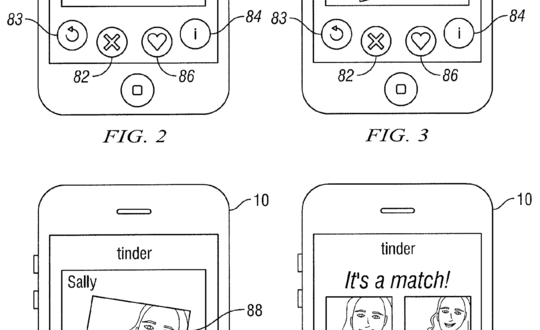Swipe Right for Patent Protection
Jan 29 2020
Tinder's dating app allows user's to 'swipe right' on dating prospect where there is interest and 'swipe left' on a non-prospect when there is no interest. Tinder, which is part of Match Group, has a patent application US20160127500A1 that relates to this swiping feature. The status of the application is pending, meaning that the Tinder has not yet secured patent protection over this feature.
The claims of this patent application allow a user to indicate a positive preference (swiping right) or a negative preference (swiping left). Although a bit cryptic, the claims in the published patent application appear to lock in a user's positive preference for a second user if a) the user has already expressed a positive preference for the second user, and b) if the second user has already expressed a positive preference for the first user.
Let's say, for example, that Zoey swipes right on Charlie, thereby indicating a positive preference for Charlie. Charlie reciprocates by swiping right on Zoey, thereby allowing communication to follow between the two. At this point, Zoey cannot change the preference for Charlie. If, however, Charlie did not reciprocate Zoey's advance or swipes left on Zoey, then Zoey can then modify her preference for Charlie (to negative) - although perhaps a bit childish.
Presumably, this feature prevents Zoey from swiping right on everyone, and then pruning her matches after the fact, thereby incentivizing honest inputs only. Having never used Tinder before, I have no idea if these rules are being implemented. I can't help but appreciate, however, how technology has impacted the art of dating.